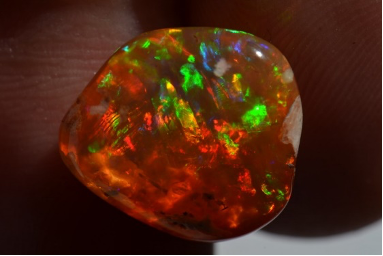Emeralds
The Emerald formation is a complex process and it takes place in an exceptionally turbulent environment where rapid changes of growth conditions are common.
It is also peculiar, and remarkably different from the other varieties of the Beryl Species: Aquamarine, Heliodor and Morganite.
Emeralds form because of metamorphism (pre-existent rocks are modified by raising temperature and pressure) or hydrothermal process (hot, chemically rich, water solution that forms minerals as it cools in rock veins) or both.
This kind of formation causes internal stresses and fractures in the mineral – for that reason fracture filling is a common treatment in the trade. Today there are many different types of filler: oils, resins or compounds, both natural and chemical.
It is crucial to disclose any treatment and the amount of it: minor, moderate or significant; not only because the value changes dramatically but also because the stone could break while it is being set in a jewellery piece or during successive repairs.
It is also important to disclose the clarity, since the heat from the jewellers’ torch, chemicals, sudden changes of temperature, can permanently damage the gem, whether if it is filled or not.
Even though emeralds have a lot of different type of inclusions that vary on the geology of individual deposits, the geographical origin of a gem is not always possible to determine, as many deposits have the same or similar geology, therefore the inclusions can be similar.
The salient examples are the well-known “three-phase” inclusions (liquid, solid and gas together), that until recently were believed to be found only in Colombian emeralds, but a scientific paper from GIA has shown that they can also be found in gems from Zambia, Afghanistan and China.
Thus, the geographical origin is an “expert opinion” based on the observation of intact inclusions and on the results of tests.
In the pictures below are shown some natural inclusions, from left and from top to the bottom: two-phase inclusions with a rectangular shape typical of Brazil, hollow tube of amphibole typical of Zimbabwe, Zambia and Russia and mica platelets typical of all the metamorphic emeralds as Zimbabwe and Russia.





































